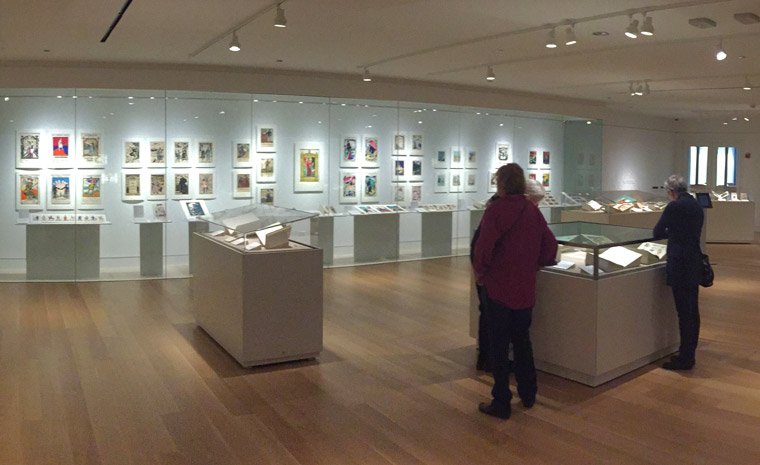Diagrams
Diagrams were prevalent in medieval scholastic and scientific manuscript culture. Often placed in the margins of the page, diagrams worked as part of the apparatus of a text, helping to organize it and make it understandable. The heuristic power of diagrams made abstract ideas concrete and visible yet maneuverable in the mind.
Today diagrams remain central to learning at the University, appearing in textbooks and PowerPoint presentations, on whiteboards, and in notes. Diagrams are also a tool for communication outside the classroom, for example in chalk advertisements on walkways and in graffiti in the Regenstein library.

Aristotle, translated into Latin by John Argyropulos
Italy, ca. 1460-1470
Paper
Ms. 5, ff. 30v-31
The Nichomachean Ethics is Aristotle’s most well-known book on ethics. In Book V Aristotle considers the question of justice. Key to his idea is the mathematical concept of proportionality between different parties or individuals: The just is the proportional; the unjust is what violates proportion. On the lower right-hand page, the scribe has drawn a diagram that uses the example of Achilles and Ajax, the two great Greek heroes of the Trojan War, and the correct distribution of the spoils of war according to the person‘s rank, to illustrate Aristotle‘s concept of justice.

Albertus Magnus
Italy, ca. 1460
Paper
Ms. 2, ff. 104v-105
In the bottom margin, a student has drawn two versions of a diagram illustrating the accompanying text on optics and ocular vision. The circle inscribed with the letter “C” represents the human eye, the triangle the cone that demarcates the field of vision. This copy attests that De Homine (The Treatise On Man), by the scholastic theologian Albertus Magnus, written in the thirteenth century, was still studied in Renaissance Italy.
Petrus Comestor
Germany, ca. early 13th century
Parchment
Ms. 120, ff.11v-12
This early thirteenth-century manuscript contains a part of Petrus Comestor’s HistoriaScholastica, a paraphrase of the historical books of the Bible. Petrus’s work was part of the core curriculum of medieval universities. As can be seen from the many annotations and markers in the margins, this copy was meant for study purposes. The opening on view recounts the story of Noah and the building of the Ark from the book of Genesis. In the lower right margin, a student translated the textual description of the Noah’s Ark into a diagram, depicting the internal division of the ship with each chamber assigned to different types of animals.




